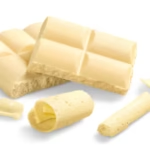Watercolor painting has a charm of its own. From the soft washes of color that bring a sky to life, to the deep vibrancy of a single brushstroke, watercolor paints have a way of turning a simple piece of paper into a work of art. But as many artists quickly realize, the quality of your paints plays a huge role in what you’re able to achieve. Choosing the right paints can mean the difference between frustration and creativity flowing effortlessly across the page.
This is where the idea of recommended watercolor paints comes in. Not every set is created equal, and with so many options available, knowing which paints are worth your time and money makes the creative journey much easier. Whether you’re just starting out with your first brush set or you’re a professional artist seeking the richest pigments and the highest durability, the right recommendations can guide you toward paints that match your needs.
In this guide, we’ll explore what makes a watercolor paint truly recommended, the differences between artist-grade and student-grade paints, suggestions for beginners and professionals, and the formats that work best depending on your style. We’ll also cover the factors to look for when buying paints, plus tips for getting the most out of them. By the end, you’ll have a clear picture of which watercolor paints are likely to suit you best and why they come so highly recommended.
Understanding Recommended Watercolor Paints
When someone refers to recommended watercolor paints, it isn’t about pushing one brand over another. Instead, the term highlights paints that consistently meet important standards artists look for. These standards often include pigment strength, color consistency, ease of mixing, and how the paint behaves on paper.
Recommended paints stand out because they don’t just put color on a page — they help you explore techniques like layering, wet-on-wet washes, or fine detailing without fighting against the medium. Quality control is also a factor; the best brands ensure that every tube or pan you buy offers the same reliability.
Pigments are at the heart of why some paints are recommended more often than others. Higher-quality pigments bring stronger, more vibrant colors that remain visible even when diluted with water. They also resist fading over time, giving your artwork longevity. Consistency matters too. Some lower-end paints can feel chalky or grainy, while recommended paints tend to dissolve smoothly and spread evenly, allowing for cleaner blends and transitions.
Artist-Grade vs. Student-Grade Watercolor Paints
| Feature | Artist-Grade Watercolors | Student-Grade Watercolors |
| Pigment Quality | High concentration, often single-pigment colors | Lower concentration, more fillers |
| Color Vibrancy | Rich, intense, and consistent | Softer, less vibrant |
| Mixing Results | Clean blends and predictable outcomes | May create muddier mixes |
| Lightfastness | Strong resistance to fading over time | Less resistant, may fade faster |
| Price | Higher cost, professional investment | Budget-friendly for beginners |
| Best For | Professionals, serious hobbyists, finished artworks | Beginners, practice, casual painting |
Recommended Watercolor Paints for Beginners
For beginners, the most recommended watercolor paints share a few important qualities. They should be easy to use, forgiving of mistakes, and not overly expensive. Starting with affordable paints doesn’t limit your growth — it actually allows you to explore techniques without worrying about wasting costly supplies.
Recommended beginner sets usually come in pans or compact travel boxes. These formats make it simple to keep paints organized, and they’re easy to carry around if you want to sketch outdoors. Many beginner-friendly paints also include a balanced color selection so you can learn mixing without needing dozens of different shades.
Some of the most suggested beginner options balance price and performance, offering good pigment strength without the complexity of professional-grade paints. They’re strong enough to let you see the effects of layering and blending, but light enough on the wallet that you can experiment freely. For someone starting fresh, the reassurance of using paints that other beginners have found reliable goes a long way in building confidence.
Recommended Watercolor Paints for Professionals
At the professional level, the criteria for recommended watercolor paints change. Professionals need paints that not only look vibrant but also remain stable over time. This is where qualities like lightfastness — the resistance of pigments to fading when exposed to light — become crucial. For artworks that may be displayed or sold, the assurance that colors won’t lose their intensity is non-negotiable.
Professional artists often lean toward paints made with single pigments. These paints allow for cleaner mixing, creating predictable secondary colors rather than muddy results. They also look richer and more nuanced on paper. Consistency across batches is another reason professionals prefer specific brands — no artist wants to find that a favorite shade suddenly looks different in a new tube.
Trusted brands have built their reputations by consistently delivering these qualities. They invest in research, sourcing the best pigments, and ensuring paints behave the way serious artists expect them to. For professionals, the investment pays off not only in the creative process but also in the quality of the final work.
Popular Formats of Recommended Watercolor Paints
One important consideration when choosing recommended watercolor paints is the format they come in. The two most common are tubes and pans, each with its advantages.
Tubes contain softer, more concentrated paint that can be squeezed out in varying amounts. They’re excellent for large washes or for artists who use a lot of one color. Pans, on the other hand, are small dried cakes of paint arranged in boxes. They’re portable, tidy, and perfect for travel sketching or smaller-scale work.
Beyond these, compact travel sets have become increasingly popular. They combine the convenience of pans with portability, often including mixing areas and brushes. For those who like painting outdoors or in cafes, travel sets make it easier to capture inspiration on the go.
The format you choose depends largely on your style. Someone painting large landscapes in a studio may prefer tubes, while an urban sketcher might find pans more practical. Recommended paints are available in both, so there’s no shortage of options.
Factors to Consider When Selecting Recommended Watercolor Paints
When you’re faced with rows of colorful boxes and tubes, it helps to have a clear idea of what to look for. Several factors determine whether a watercolor paint deserves to be recommended.
Pigment transparency and vibrancy are among the most important. Transparent paints allow light to pass through layers, creating that luminous quality watercolors are famous for. Vibrancy ensures that your colors remain striking, even after dilution.
Mixing ability and layering also matter. Good paints mix predictably, giving you control over secondary and tertiary colors. They also allow for layering without lifting or muddying the paint beneath, which is essential for building depth.
Finally, price versus long-term value is worth considering. While professional-grade paints cost more upfront, they often last longer because a small amount goes further. Student paints are more affordable but may need replacing sooner. Recommended paints, in either category, are those that balance cost with performance in a way that feels fair to the artist.
Tips for Making the Most of Your Recommended Watercolor Paints
Having the best paints is only half the journey. How you use and care for them makes just as much difference. Proper storage, for example, prevents paints from drying out prematurely or becoming contaminated with other colors. Keeping tubes sealed tightly and pans clean extends their life.
Pairing your paints with the right brushes and paper also enhances results. Watercolor brushes are designed to hold water and release it gradually, while watercolor paper absorbs moisture in ways that allow paints to shine. Even the most recommended paints can look dull on thin or poor-quality paper.
Taking time to experiment is another tip worth noting. Try mixing colors you wouldn’t normally combine or layering transparent washes to see how they interact. The more you practice, the more you’ll understand how recommended paints respond, giving you confidence in your artistic choices.
Conclusion
In the world of art, the right materials can make all the difference. The journey to finding recommended watercolor paints isn’t about following trends but about discovering what truly supports your creativity. From student-grade sets that give beginners the freedom to learn, to professional-grade paints that deliver unmatched quality and durability, there’s a wide range of options to suit every stage of your artistic path.
By understanding what makes certain paints recommended, exploring the differences between formats, and considering the key factors of pigment quality, transparency, and value, you can choose paints that feel right for you. With the right paints in hand — whether in tubes, pans, or travel sets — your creativity has the freedom to flow.
In the end, recommended watercolor paints aren’t just about color on a page. They’re about confidence, ease, and the joy of expressing yourself without limitation. Choosing well means every brushstroke brings you closer to the artwork you imagined.
My name is Mustafa, and I have been blogging for over 5 years. I am passionate about sharing complete, accurate, and helpful information with my readers. Along with managing content on The Matcha Read, I also contribute blog posts to premium websites. My goal is to provide valuable insights in a clear and easy-to-understand way, so every reader walks away with useful knowledge.










